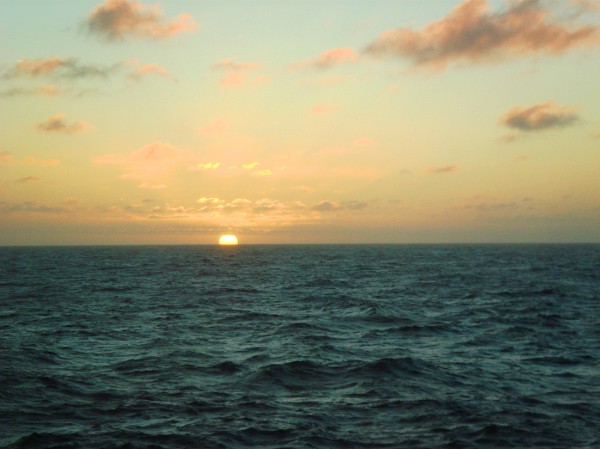 In many parts of the world, life in the oceans is dying out. The term ‘dead zones’ is used to describe seas that are devoid of marine life. And these zones are growing in size and number.
In many parts of the world, life in the oceans is dying out. The term ‘dead zones’ is used to describe seas that are devoid of marine life. And these zones are growing in size and number.
It’s not just the decline in fish and other marine species that’s worrying environmentalists and many others; it’s a growth in rubbish. Part of this is caused by natural disasters, such as the 2011 Tsunami in Japan that washed huge amounts of debris into the Pacific Ocean. But much of it is caused by rubbish carried down rivers and into the seas, or rubbish jettisoned from ships. The problem is particularly acute in areas of the oceans where currents circulate the rubbish into huge rubbish dumps. There are two such areas either side of Hawaii in the Pacific. Both are vast.
The first article below tells the tale of Newcastle (Australia) yachtsman Ivan Macfadyen. He completed the 2013 Melbourne to Osaka double handed yacht race earlier this year as skipper of his yacht Funnelweb and then went on to bring the yacht home to Australia via America and race the famous Trans-Pac Yacht Race from Los Angeles to Hawaii along the way.
Exactly 10 years before, when [he] had sailed exactly the same course from Melbourne to Osaka, all he’d had to do to catch a fish from the ocean between Brisbane and Japan was throw out a baited line.
“There was not one of the 28 days on that portion of the trip when we didn’t catch a good-sized fish to cook up and eat with some rice,” Macfadyen recalled. But this time, on that whole long leg of sea journey, the total catch was two. No fish. No birds. Hardly a sign of life at all.
After reaching Osaka in Japan, they sailed on to San Francisco via Hawaii.
“After we left Japan, it felt as if the ocean itself was dead,” Macfadyen said. “We hardly saw any living things. We saw one whale, sort of rolling helplessly on the surface with what looked like a big tumour on its head. It was pretty sickening.”
“I’ve done a lot of miles on the ocean in my life and I’m used to seeing turtles, dolphins, sharks and big flurries of feeding birds. But this time, for 3000 nautical miles there was nothing alive to be seen.”
In place of the missing life was garbage in astounding volumes.
As economists, you should readily understand that here we have a case of over-exploited common resources – a Tragedy of the Commons of epic proportions. One ship’s rubbish may make a tiny difference, but when the cost of dumping is near zero and when the oceans are not policed, what is rational for a single ship becomes a disaster when repeated tens of thousands of times by other ships
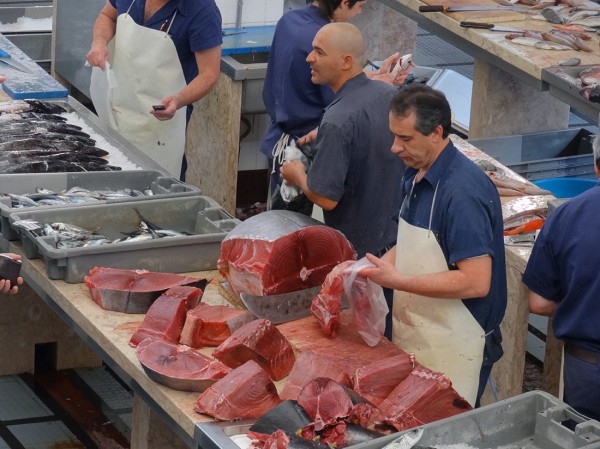 Again, overfishing is the result of seemingly rational behaviour by crews of individual fishing boats. But as Economics (8th edition) points out on pages 328–30:
Again, overfishing is the result of seemingly rational behaviour by crews of individual fishing boats. But as Economics (8th edition) points out on pages 328–30:
Common resources are not owned but are available free of charge to anyone. Examples include the air we breathe and the oceans for fishing. Like public goods, they are non-excludable. For example, fishing boats can take as many fish as they are able from the open seas. There is no ‘owner’ of the fish to stop them. As long as there are plentiful stocks of fish, there is no problem.
But as more people fish the seas, so fish stocks are likely to run down. This is where common resources differ from public goods. There is rivalry. One person’s use of a common resource diminishes the amount available for others. This result is an overuse of common resources. This is why fish stocks in many parts of the world are severely depleted, why virgin forests are disappearing (cut down for timber or firewood), why many roads are so congested and why the atmosphere is becoming so polluted (being used as a common ‘dump’ for emissions). In each case, a resource that is freely available is overused. This has become known as the tragedy of the commons.
… When I use a common resource, I am reducing the amount available for others. I am imposing a cost on other people: an external cost. If I am motivated purely by self-interest, I will not take these external costs into account.
Try doing some research to find out just what has been happening to the state of the oceans in recent years.
Articles
The ocean is broken Newcastle Herald (Australia), Greg Ray (18/10/13)
Our Planet Is Exploding With Ocean Dead Zones Business Insider, Dina Spector (26/6/13)
Health of oceans ‘declining fast’ BBC News, Roger Harrabin (3/10/13)
Chaos in the Oceans Huffington Post, Evaggelos Vallianatos (14/10/13)
Ocean Health Suffers from Overfishing, Index Finds Live Science, TechMedia, Douglas Main (16/10/13)
Information
Dead zone (ecology) Wikipedia
Common Fisheries Policy Wikipedia
Reform of the Common Fisheries Policy Fisheries DG, European Commission
Ocean Health Index OHI
Questions
- How does a common resource differ from a public good?
- What is the equilibrium use of a common resource? Demonstrate this with a diagram.
- What is the socially efficient use of a common resource such as a fishing ground?
- In what ways have modern ‘industrial’ methods of fishing compounded the problem of the overuse of fishing grounds?
- What criteria, other than social efficiency, could be used to determine the optimal use of a common resource?
- Explain how the Common Fisheries Policy of the EU works. Are there any lessons that can be learned by other groups of countries from the experience of the CFP?
- Are there any ‘good news’ stories about the state of any of the oceans? If so, to what extent are they the result of deliberate human action?
- To what extent is the Internet a common resource?
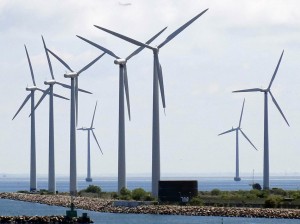 The environment has been a growing part of government policy for many years. With the Kyoto Protocol and Europe’s carbon trading system, effort has been made to reduce carbon emissions. Part of UK policy to meet its emission’s target requires substantial investment in infrastructure to provide efficient energy.
The environment has been a growing part of government policy for many years. With the Kyoto Protocol and Europe’s carbon trading system, effort has been made to reduce carbon emissions. Part of UK policy to meet its emission’s target requires substantial investment in infrastructure to provide efficient energy.
Details of the government’s Energy Bill sets out plans that will potentially increase average household energy bills by about £100 per annum, although estimates of this vary from about £90 to £170. This money will be used to finance much needed investment in infrastructure that will allow the UK to meet its carbon emissions target. With this extra cost on bills, energy companies will increase bring in something like £7.6bn. The benefit of this higher cost is that investment today will lead to lower energy bills tomorrow. Essentially, we’re looking at a short-term cost for a long-term gain.
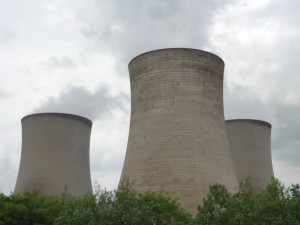 The Energy Bill also delayed setting a carbon emission target until 2016. Crucially, this will come after the next election. Environmentalists have naturally criticised this omission. John Sauven of Greenpeace said:
The Energy Bill also delayed setting a carbon emission target until 2016. Crucially, this will come after the next election. Environmentalists have naturally criticised this omission. John Sauven of Greenpeace said:
’By failing to agree to any carbon target for the power sector until after the next election, David Cameron has allowed a militant tendency within his own ranks to derail the Energy Bill … It’s a blatant assault on the greening of the UK economy that leaves consumers vulnerable to rising gas prices, and sends billions of pounds of clean-tech investment to our economic rivals.’
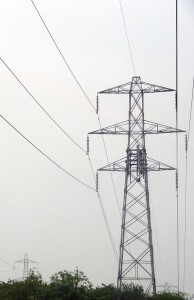
One further problem that this lack of a target creates is uncertainty. The energy sector requires significant investment and in order to be encouraged to invest, firms need assurances. Without knowing the target and hence facing a degree of uncertainty, firms may be less likely to invest in building new power plants. And this investment is crucial. The Government has committed to replacing most coal-fired power stations across Britain with low carbon technology at a cost of hundreds of billions of pounds. However, the Chancellor has said “he would not allow saving the planet to come at the cost of ‘putting our country out of business.’”
When this Energy Bill is published, it is claimed that £110bn of spending on different aspects of the National Grid will occur. The suggestion is that this will generate a further 250,000 jobs by 2030 and will be a big step in the right direction towards creating an economy that is more reliant on clean energy.
The following articles consider the wide range of issues surrounding the Energy Bill.
’It’s reasonable to hike energy bills to build wind farms’ says Tim Yeo The Telegraph, Rowena Mason (23/11/12)
Energy Bill to increase prices to fund cleaner fuel BBC News (23/11/12)
Energy deal means bills will rise to pay for green power The Guardian, Juliette Jowit and Fiona Harvey (23/11/12)
Energy Bill Q&A BBC News (23/11/12)
Energy bills to rise by £170 a year to fund wind farms Independent, Andrew Woodcock and Emily Beament (23/11/12)
Energy deal – but no target to cut Britain’s carbon emissions Independent, Nigel Morris (22/11/12)
Davey defends contentious energy agreement Financial Times, Jim Pickard, Pilita Clark and Hannah Kuchler (23/11/12)
Energy bill lacks emissions target Channel 4 News (23/11/12)
Questions
- Why does the environment require so much government intervention? Think about the different ways in which the environment as a market fails.
- If household bills rise, is there likely to be an income and substitution effect between consumption of ‘energy’ and other goods? Which direction will each effect move in and which do you think would be the largest?
- Why is uncertainty such a deterrent for investment? Why does a lack of a carbon emissions target represent uncertainty?
- The higher cost of bills today may enable future bills to fall. Why is this? For a household, explain why discount factors could be important here.
- Why do some argue that the extra cost to households set out by the government are likely to under-estimate the actual increase households will face?
- Is the Chancellor right to say that he will not put our country out of business to save the planet?
 EU environmental legislation is beginning to cause problems in the UK. As it prohibits coal-fired power plants from generating power, they will be forced to close. This means that the UK will be forced to rely more on imported energy, which could lead to price rises, as energy shortages emerge.
EU environmental legislation is beginning to cause problems in the UK. As it prohibits coal-fired power plants from generating power, they will be forced to close. This means that the UK will be forced to rely more on imported energy, which could lead to price rises, as energy shortages emerge.
Ofgem, the energy regulator has said that the risk of a gas shortage is likely to be at its highest in about 3 years time, as the amount of spare capacity is expected to fall from its current 14% to just 4%. Energy shortages have been a concern for some time, but the report from Ofgem indicates that the predicted time frame for these energy shortages will now be sooner than expected. Ofgem has said that the probability of a black-out has increased from 1 in 3,300 years now to 1 in 12 years by 2015.
The government, however, has said that its Energy Bill soon to be published will set out plans that will secure power supply for the UK. Part of this will be through investment, leading to new methods of generating energy. The Chief Executive of Ofgem, Alistair Buchanan said:
‘The unprecedented challenges in facing Britain’s energy industry … to attract the investment to deliver secure, sustainable and affordable energy supplies for consumers, still remain.’
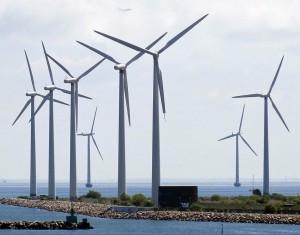 One particular area that will see growth is wind-farms: a controversial method of power supply, due to the eye-sore they present (to some eyes, at least) and the noise pollution they generate. But with spare capacity predicted to fall to 4%, they will be a much needed investment.
One particular area that will see growth is wind-farms: a controversial method of power supply, due to the eye-sore they present (to some eyes, at least) and the noise pollution they generate. But with spare capacity predicted to fall to 4%, they will be a much needed investment.
Perhaps of more concern for the everyday household will be the impact on energy prices. As we know, when anything is scarce, the price begins to rise. As energy shortages become more of a concern, the market mechanism will begin to push up prices. With other bills already at record highs and incomes remaining low, the average household is likely to feel the squeeze. The following articles and the Ofgem report considers this issue.
Report
Electricity Capacity Assessment Ofgem Report to Government, Ofgem (5/12/12)
Articles
Power shortage risks by 2015, Ofgem warns BBC News (5/10/12)
Britain faces risk of blackout The Telegraph (5/10/12)
Ofgem estimates tightening margins for electricity generation Reuters (5/10/12)
Electricity shortages are ‘risk’ by 2015 Sky News (5/10/12)
Future energy bills could give customers a nasty shock ITV News, Chris Choi (5/10/12)
Questions
- What is the role of Ofgem in the UK?
- Explain the way in which prices adjust as resources become more or less scarce. Use a demand and supply diagram to illustrate your answer.
- To what extent do you think the UK should be forced to close down its coal-fired plants, as a part of EU environmental legislation?
- Are there any market failures associated with the use of wind farms? Where possible, use a diagram to illustrate your answer.
- Explain why an energy shortage will lead to an increase in imports and how this in turn will affect energy prices.
- What are the government’s plans to secure energy provision in the UK? Do you think they are likely to be effective?
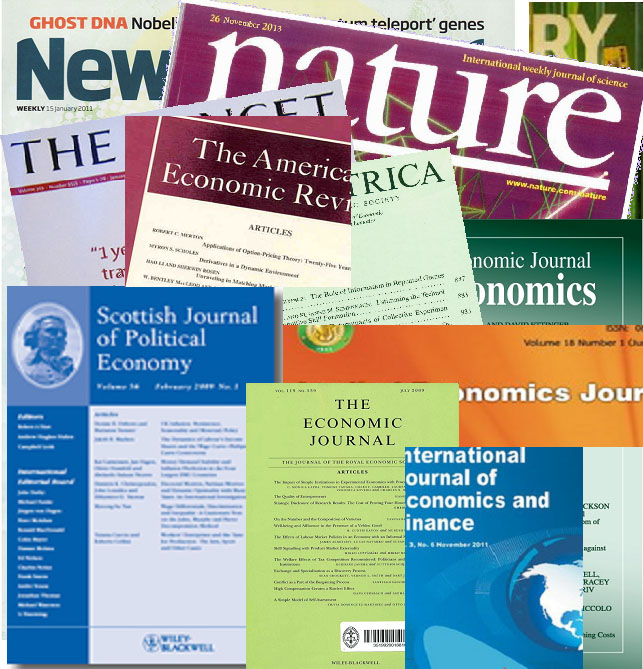 Academic research is encouraged by universities. Indeed, the number and quality of research publications is the most important criterion for promotion in many universities.
Academic research is encouraged by universities. Indeed, the number and quality of research publications is the most important criterion for promotion in many universities.
Periodically university research in the UK is publicly assessed. The latest assessment is known as the Research Excellence Framework (REF) and will be completed in 2014. Most research that will be considered by the REF is published in peer-reviewed journals. Most of these journals are subscription based. Universities pay large amounts of money in subscriptions.
In recent years there has been much criticism by both academics and universities about the high cost of such subscriptions. In a movement dubbed the Academic Spring, pressure has mounted for journal articles to be made available free of charge – i.e. on open access.
The government too has been concerned that the results of publicly-funded research has been disappearing behind ‘paywalls’ and hence not available free to people outside the universities which subscribe to such journals. Indeed, no single university can afford licences for all the 25,000 peer-reviewed journals currently being published. As a result, the government set up a committee under the chair of Professor Janet Finch to examine alternative ways of making research more accessible. The committee has just published its report.
It advocates an expansion of open-access journals:
The principle that the results of research that has been publicly funded should be freely accessible in the public domain is a compelling one, and fundamentally unanswerable…
Instead of relying on subscription revenues provided by or on behalf of readers, most [open-access journals] charge a fee to authors…before an article is published. Access for readers is then free of charge, immediately on publication, and with very few restrictions on use and re-use.
Under this model, universities would essentially pay to have their academics’ articles published rather than paying to purchase the journal. Alternatively, research councils could fund the publication of articles based on research already funded by them.
Many people go further. They argue that authors ought to be able to have their published research in any journal made freely available, after an embargo period, through their university’s website.
So is the current pricing model the best for encouraging research and for disseminating its findings? Or is open access a better model – and if so, of what form? Or would it discourage publishers and lead, in the end, to less being published or to a less rigorous peer review process? The questions are ones of pricing, incentives, choices and investment – the questions that economists are qualified to consider.
Articles
Open access may require funds to be rationed Times Higher Education, Paul Jump (21/6/12)
Set science free from publishers’ paywalls New Scientist, Stephen Curry (19/6/12)
Scientists must make research an open book Independent, Martin Hickman (18/6/12)
Report calls on government to back open access science BBC News, Pallab Ghosh (19/6/12)
Open access is the future of academic publishing, says Finch report Guardian, Alok Jha (19/6/12)
Open access to science – its implications discussed in UK raport ZME Science (19/6/12)
UK move to ‘open access’ in publishing Phys.Org, Justin Norrie (20/6/12)
Report
Finch Group Report: Overview Research Information Network (June 2012)
Finch Group Report: Executive Summary Research Information Network (June 2012)
Finch Group Report: Full Report Research Information Network (June 2012)
Questions
- Explain the difference between the ‘gold’ and ‘green’ models of open-access journal article publishing?
- What externalities are involved in journal publication? What are the implications of this for socially efficient pricing?
- How could journal publication be made profitable under an open-access system?
- What are the incentive effects for (a) academics and (b) universities of ranking journals? Does the REF, whereby research articles are judged on their own merits, overcome problems of ranking journals?
- Does the existence of journal rankings allow the top journals in each discipline to maintain a position of market power? How is this likely to impact on journal or article pricing?
- How would university finances be affected by a move towards gold open access journals (a) in the short term; (b) in the long term?
- Would it be in universities’ interests to produce their own open-access journals?
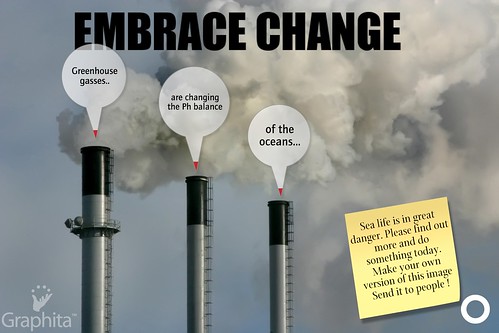 No market is perfect and when the market mechanism fails to deliver an efficient allocation of resources, we say the market fails and hence there is justification for some government intervention. From a monopolist dominating an industry to a manufacturing firm pumping out pollution, there are countless examples of market failure.
No market is perfect and when the market mechanism fails to deliver an efficient allocation of resources, we say the market fails and hence there is justification for some government intervention. From a monopolist dominating an industry to a manufacturing firm pumping out pollution, there are countless examples of market failure.
The Guardian is creating a guide to climate change, covering areas from politics to economics. The problem of climate change has been well documented and this blog considers a particular issue – the case for climate change or the environment as a market failure. In many cases just one market failure can be identified, for example an externality or a missing market. However, one of the key problems with climate change is that there are several market failures: externalities in the form of pollution from greenhouse gases; poor information; minimal incentives; the problem of the environment as a common resource and the immobility of factors of production, to name a few. Each contributes towards a misallocation of resources and prevents the welfare of society from being maximised.
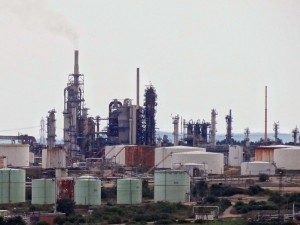 When a market fails, intervention is justified and economists argue for a variety of policies to tackle the above failures. In a first-best world, there is only one market failure to tackle, but in the case of the environment, policy must be designed carefully to take into account the fact that there are numerous failings of the free market. Second-best solutions are needed. Furthermore, as the problem of climate change will be felt by everyone, whether in a developed or a developing country, international attention is needed. The two articles below are part of the Guardian’s ultimate climate change guide and consider a huge range of economic issues relating to the problem of environmental market failure.
When a market fails, intervention is justified and economists argue for a variety of policies to tackle the above failures. In a first-best world, there is only one market failure to tackle, but in the case of the environment, policy must be designed carefully to take into account the fact that there are numerous failings of the free market. Second-best solutions are needed. Furthermore, as the problem of climate change will be felt by everyone, whether in a developed or a developing country, international attention is needed. The two articles below are part of the Guardian’s ultimate climate change guide and consider a huge range of economic issues relating to the problem of environmental market failure.
Why do economists describe climate change as a ‘market failure’? Guardian, Grantham Research Institute and Dunca Clark (21/5/12)
What is the economic cost of climate change? Guardian (16/2/11)
Questions
- What is meant by market failure?
- What are the market failures associated with the environment and climate change? In each case, explain how the issue causes an inefficient allocation of resources and thus causes the market to fail? You may find diagrams useful!
- What is meant by the first-best and second-best world?
- What does a second-best solution aim to do?
- Using diagrams to help your explanation, show how a tax on pollution will have an effect in a first best world, where the only market failure is a negative externality and in a second best world, where the firm in question is also a monopolist.
- What solutions are there to the problem of climate change? How effective are they likely to be?
- Does the need to tackle climate change require international co-operation? Can you use game theory to help your explanation?!
 In many parts of the world, life in the oceans is dying out. The term ‘dead zones’ is used to describe seas that are devoid of marine life. And these zones are growing in size and number.
In many parts of the world, life in the oceans is dying out. The term ‘dead zones’ is used to describe seas that are devoid of marine life. And these zones are growing in size and number. Again, overfishing is the result of seemingly rational behaviour by crews of individual fishing boats. But as Economics (8th edition) points out on pages 328–30:
Again, overfishing is the result of seemingly rational behaviour by crews of individual fishing boats. But as Economics (8th edition) points out on pages 328–30:






